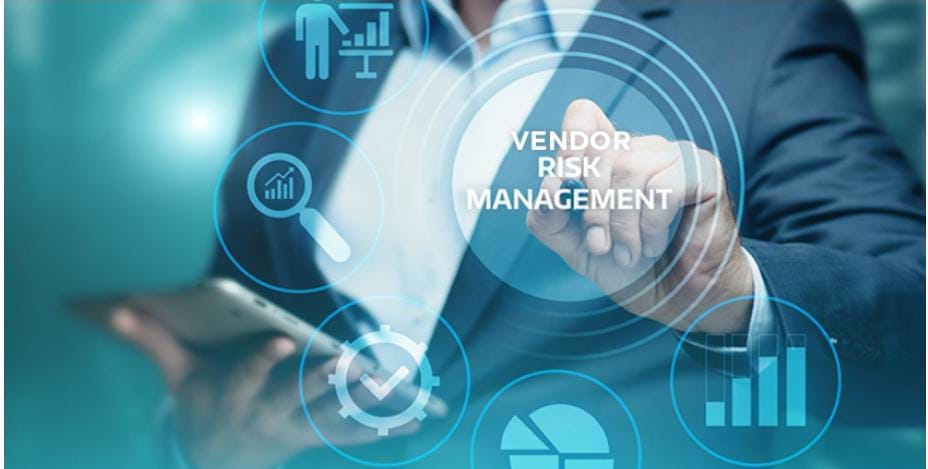In the ever-evolving landscape of business operations, organizations are increasingly relying on external vendors to fulfill various needs. While outsourcing provides numerous benefits, it also introduces a set of risks that can impact the overall well-being of a business.
This blog aims to provide a comprehensive understanding of vendor risk management, outline the vendor risk management process, and shed light on the challenges organizations face in effectively managing their vendor relationships.
What is Vendor Risk Management?
Vendor risk management (VRM) is the structured process of identifying, assessing, mitigating, and monitoring the potential risks associated with outsourcing tasks or services to third-party vendors. The goal of VRM is to ensure that organizations can derive the benefits of outsourcing while minimizing and controlling the associated risks.
Vendor Risk Management Process
Identification of Vendors:
The first step in the vendor risk management process is identifying all vendors associated with the organization. This includes suppliers, service providers, and any external entities that play a role in the delivery of products or services.
Risk Assessment:
Once vendors are identified, a comprehensive risk assessment is conducted. This involves evaluating the potential risks associated with each vendor, considering factors such as financial stability, data security practices, regulatory compliance, and the criticality of the services they provide.
Due Diligence and Vendor Selection:
During the due diligence phase, organizations conduct a thorough examination of potential vendors. This includes reviewing their financial statements, assessing their cybersecurity measures, checking references, and ensuring alignment with the organization’s values and objectives. The vendor selection process is crucial in mitigating risks from the outset.
Contract Negotiation:
Clear and well-defined contracts are essential in managing vendor risks. Contracts should outline performance expectations, service level agreements (SLAs), data security requirements, and mechanisms for dispute resolution. The negotiation phase is an opportunity to align expectations and establish a foundation for a successful partnership.
Continuous Monitoring and Compliance:
Vendor risk management is an ongoing process that involves continuous monitoring of vendor activities. This includes regular assessments of compliance with contractual terms, performance against agreed-upon metrics, and adherence to relevant regulations and industry standards.
Risk Mitigation Strategies:
When risks are identified, organizations must develop and implement mitigation strategies. This could involve implementing additional security measures, diversifying vendor relationships, or establishing contingency plans to address potential disruptions in service.
Regular Reporting and Communication:
Transparent communication is key to effective vendor risk management. Regular reporting mechanisms should be established to keep stakeholders informed of the status of vendor relationships, any identified risks, and the steps being taken to address them.
Periodic Review and Reassessment:
Vendor risk management is not a one-time activity but a continuous cycle. Periodic reviews and reassessments ensure that the organization’s risk profile is up-to-date, reflecting any changes in the business environment or the vendor landscape.
Vendor Management Challenges
Despite the importance of vendor risk management, organizations face various challenges in effectively implementing and maintaining this process. Understanding these challenges is crucial for developing strategies to address them proactively.
Lack of Visibility:
One of the primary challenges in vendor management is a lack of visibility into the operations of external vendors. Organizations often struggle to gain real-time insights into vendor activities, which can hinder their ability to identify and respond to potential risks promptly.
Data Security Concerns:
With the increasing reliance on external vendors, data security has become a paramount concern. Ensuring that vendors have robust cybersecurity measures in place to protect sensitive information is challenging but essential for safeguarding the organization and its stakeholders.
Compliance Risks:
Regulatory landscapes are constantly evolving, and ensuring that vendors comply with relevant laws and industry standards is a persistent challenge. Non-compliance can lead to legal consequences, financial penalties, and damage to the organization’s reputation.
Dependency Risks:
Relying heavily on a single vendor for critical services introduces dependency risks. If that vendor experiences disruptions or fails to meet expectations, it can have a cascading impact on the organization’s operations.
Communication Gaps:
Effective communication is vital in vendor management, but communication gaps can emerge, particularly in distributed or globalized vendor ecosystems. Misunderstandings, delays in information sharing, and language barriers can hinder collaboration.
Strategic Alignment:
Ensuring that vendors are aligned with the organization’s strategic objectives and values can be challenging. A misalignment in goals or values may lead to conflicts and impact the overall success of the partnership.
Scalability Challenges:
As organizations grow, their vendor ecosystems often expand. Managing a growing number of vendors and assessing the risks associated with each can become complex, requiring scalable systems and processes.
Vendor Performance Monitoring:
Establishing effective mechanisms for monitoring vendor performance is a challenge. Defining and tracking Key Performance Indicators (KPIs), ensuring service levels are met, and addressing deviations in a timely manner require robust performance monitoring systems.
Strategies to Overcome Vendor Management Challenges
Invest in Technology:
Leveraging technology, such as Vendor Management Systems (VMS) and risk management software, can enhance visibility and streamline vendor management processes. These tools provide centralized platforms for tracking vendor activities, managing contracts, and assessing risks.
Regular Training and Education:
Training and educating both internal stakeholders and vendors on best practices in vendor management, data security, and compliance contribute to a more informed and collaborative ecosystem.
Diversification of Vendors:
To mitigate dependency risks, organizations should consider diversifying their vendor relationships. Having multiple vendors for critical services provides a level of redundancy and resilience in the face of potential disruptions.
Proactive Risk Mitigation:
Rather than reacting to risks as they arise, organizations should adopt a proactive approach to risk mitigation. This involves conducting thorough risk assessments, developing mitigation strategies in advance, and continuously monitoring for emerging risks.
Regular Audits and Assessments:
Conducting regular audits and assessments of vendor activities, cybersecurity measures, and compliance with contractual terms ensures ongoing adherence to established standards.
Effective Communication Channels:
Establishing effective communication channels, both internally and with vendors, is essential. Clear communication protocols, regular meetings, and collaboration tools contribute to a more cohesive and informed vendor ecosystem.
Strategic Vendor Selection:
Investing time and resources in strategic vendor selection pays dividends in risk management. Organizations should prioritize vendors that align with their strategic goals, values, and demonstrate a commitment to a strong partnership.
Continuous Improvement:
Vendor risk management should be viewed as a continuous improvement process. Regularly reviewing and refining risk management strategies, processes, and tools ensures that the organization remains adaptive and resilient.
Conclusion
In conclusion, vendor risk management is a critical aspect of modern business operations. Effectively navigating the complexities of vendor relationships requires a proactive and strategic approach. By understanding the vendor risk management process and actively addressing the challenges associated with it, organizations can build resilient vendor ecosystems that contribute to overall business success.
As technology evolves and the global business landscape continues to change, the importance of vendor risk management will only grow. Organizations that invest in robust processes, leverage technology, and foster strong communication within their vendor ecosystems will be better positioned to mitigate risks, seize opportunities, and build enduring partnerships with external vendors.





